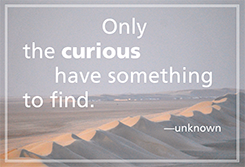
Abstract
The purpose for the following paper will introduce a workshop we use to enhance motivation in a creative environment and spark new avenues of curiosity. The concept of parallel learning is the result of a research project we undertook focusing on similar situations we encounter at Virginia Commonwealth University in Qatar.
Summary
As design educators, indeed as all educators, we continually strive to get students to think in novel ways and push their ideas into more interesting realms of communication. For us, the approach to generating creative concepts relies on a process and method that sustains and maintains curiosity as well as motivation. All too often we are confronted with conceptual blocks for how to activate the classroom as a learning environment. Such doubts lead to frustrating situations that leave both the students and teachers questioning the learning objectives. The purpose for the following paper will introduce a workshop we use to enhance motivation in a creative environment and spark new avenues of curiosity.
The concept of parallel learning is the result of a research project we undertook focusing on similar situations we encounter at Virginia Commonwealth University in Qatar. The method we employ requires student designers to investigate, analyze and synthesize two different subject matters as a way to convey a new message using the visual language produced from each subject. The student selects an initiator path from within each subject field and with this must build a communication objective that conveys a new, more interesting, message. This approach embeds the matching of unexpected connections as a way to create more meaningful, creative forms of communication. While this method is one designed to initiate visual thinking, this proposed workshop would be an engaging seminar in how to implement the idea of parallel learning in the classroom.
Bibliography & Selected Reading LIst
De, Bono Edward. Creativity Workout: 62 Exercises to Unlock Your Most Creative Ideas. Berkeley, CA: Ulysses, 2008
Harrison, Sam. Zing!: Five Steps and 101 Tips for Creativity on Command. Highlands NC: MacHillock, 2003.
Kaufman, James C. Creativity 101. New York, NY: Springer Pub., 2009.
Smith, Keri. Mess: The Manual of Accidents and Mistakes. New York: Perigee, 2010.
Smith, Keri. This Is Not a Book. New York: Perigee, 2009.
Smith, Linda Tuhiwai. Decolonizing Methodologies: Research and Indigenous Peoples. London:Zed, 1999.

Edward DeBono
